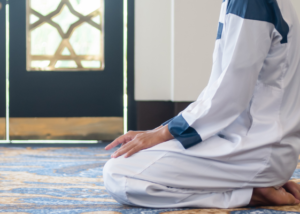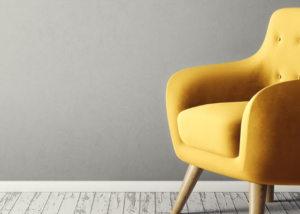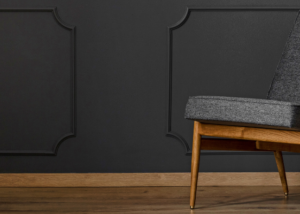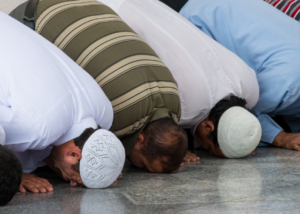Why do the Hanafis adopt the Iftiraash sitting posture in Salah? The Hadith in Bukhari opposes this.
Quran
Hadith
Islamic Text
The Hanafi Madhab gave preference to the numerous Hadith narrations that prove the Iftiraash posture during the sitting in Salah. Hanafis recognise and respect the difference of opinion. However, they felt that these narrations more closely represent the Sunnah.
وَكَانَ يَقُولُ فِي كُلِّ رَكْعَتَيْنِ التَّحِيَّةَ، وَكَانَ يَفْرِشُ رِجْلَهُ الْيُسْرَى وَيَنْصِبُ رِجْلَهُ الْيُمْنَى
Sayidah Ayeshah (May Allah Most High be pleased with her) narrated, ‘He (the Prophet ﷺ) used the recite Attahiyaat in every second Rakah. And he ﷺ used to lay down his left foot and straighten his ﷺ right foot. (Sahih Muslim 498 – 240).
In the Hadith narration above it is clear that the Messenger of Allah ﷺ practiced the Iftiraash posture during the sitting in Salah. Iftiraash refers to straightening the right foot, whilst placing the left flat and sitting upon it.
The Hadith above is Sahih since it is in Sahih Muslim. The following Hadith from Sahih al-Bukhari could be used to support the opinion that opposes the Hanafi opinion. However, from the Hanafi perspective, this Hadith is not as clear as the one in Muslim.
فَإِذَا جَلَسَ فِي الرَّكْعَتَيْنِ جَلَسَ عَلَى رِجْلِهِ اليُسْرَى، وَنَصَبَ اليُمْنَى، وَإِذَا جَلَسَ فِي الرَّكْعَةِ الآخِرَةِ قَدَّمَ رِجْلَهُ اليُسْرَى، وَنَصَبَ الأُخْرَى وَقَعَدَ عَلَى مَقْعَدَتِهِ
When he (the Prophet ﷺ) sat after two Rakahs, he sat on his left foot and extended the right one. And when he ﷺ sat in the final Rakah, he brought forth his left foot and extended the other. He ﷺ sat on his rear. (Sahih al-Bukhari, 828).
Although the Hadith above seems to be describing the Tawaruk position, it is not absolutely clear. There is no mention of the left foot extending beyond the right shin. However, it is not describing Iftiraash either. In any case, the fact that both positions have evidence is clear. This is why the Hanafi scholars pointed this out in their books.
وَقَدْ خَالَفَ فِي ذَلِكَ أَيْضًا آخَرُونَ فَقَالُوا: الْقُعُودُ فِي الصَّلَاةِ كُلِّهَا سَوَاءٌ عَلَى مِثْلِ الْقُعُودِ الْأَوَّلِ فِي قَوْلِ أَهْلِ الْمَقَالَةِ الثَّانِيَةِ يَنْصِبُ رِجْلَهُ الْيُمْنَى وَيَفْتَرِشُ رِجْلَهُ الْيُسْرَى فَيَقْعُدُ عَلَيْهَا. (شرح معاني الآثار)
Others differed with this. They said, all of the sitting postures in Salah are the same. They are like the first sitting. The people of the second opinion say that the right foot is extended, the left foot is laid flat and he sits upon it. (Imam Abu Jafar al-Tahaawi, Sharh Ma’aani al-Aathaar).
قَالَ الْقَاضِي: اخْتَلَفُوا فِي كَيْفِيَّةِ الْجَلَسَاتِ فَقَالَ أَبُو حَنِيفَةَ: يَجْلِسُ فِيهِمَا مُفْتَرِشًا، وَقَالَ مَالِكٌ: بَلْ مُتَوَرِّكًا، وَقَالَ الشَّافِعِيُّ: يَتَوَرَّكُ فِي التَّشَهُّدِ الْأَخِيرِ وَيَفْتَرِشُ فِي الْأَوَّلِ. (مرقاة المفاتيح شرح مشكاة المصابيح)
Al-Qadi said, they differed regarding the sitting posture. Abu Hanifah said, he sits in the Iftiraash posture for both. Malik said, rather Tawaruk. Al-Shafi said, he practices Tawaruk for the final sitting and Iftiraash for the first. (Imam Ali al-Qari, Mirqaat al-Mafateeh).
As seen above, the Hanafi scholars were respectful of the difference of opinion that exists. They did not consider anyone deviant for holding an opinion different to them. This is the way of Ahl al-Sunnah we respect valid differences, whilst opposing invalid differences.
Unfortunately, there are groups of Muslims in our age that are unwilling to accept difference of opinion. They take a position and attack every other opinion and consider it misguidance. They seem not to realise that this attitude is actually an attack on the Sahabah themselves.
The Sahabah differed on many legal matters. However, they did not consider those who differed with them to be deviant. Rather they respected the difference. This has been the way of Ahl al-Sunnah ever since.
And Allah Most High Knows Best.
-Answered by Shaykh Noorud-deen Rashid (08.02.2023)
See also:
Is it true that the prayer of women is the same as men?
Are Hadith for placing your hands below the navel in Salah weak?
See also video:






